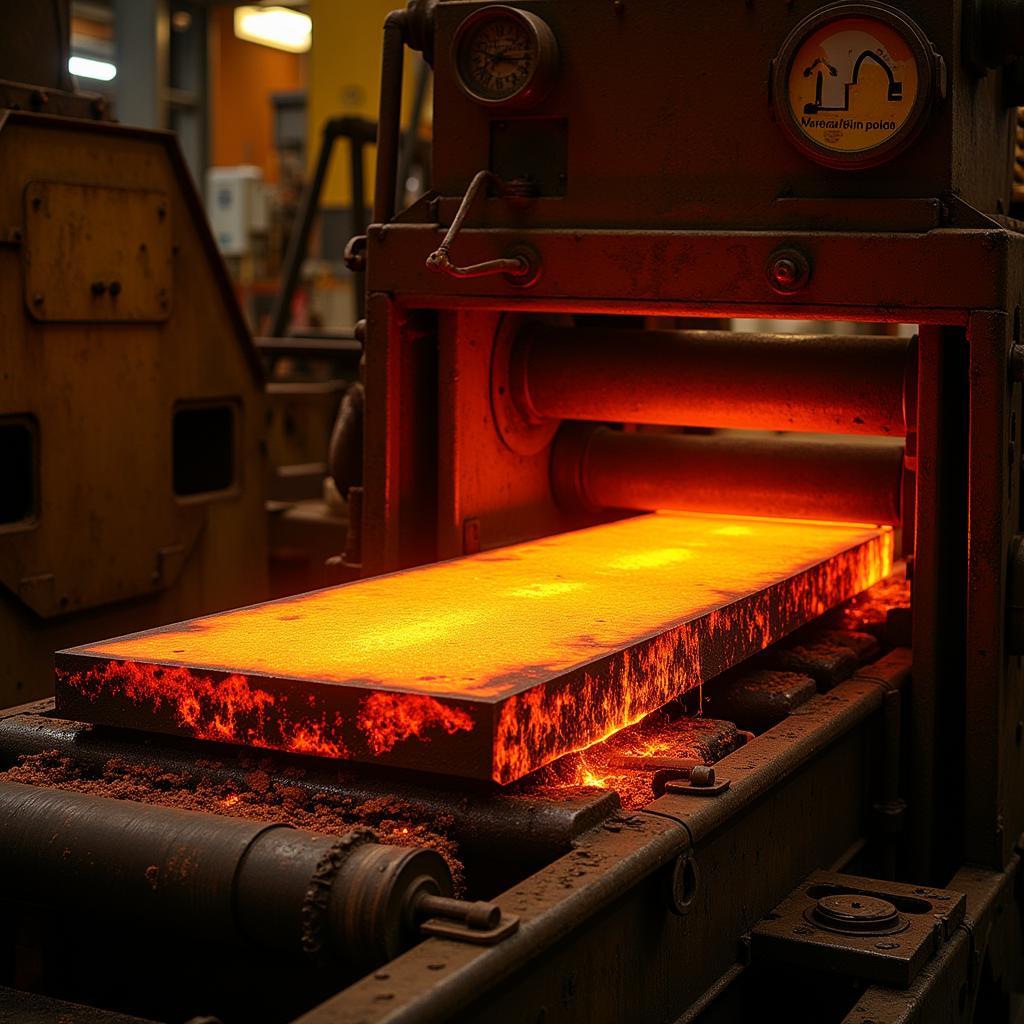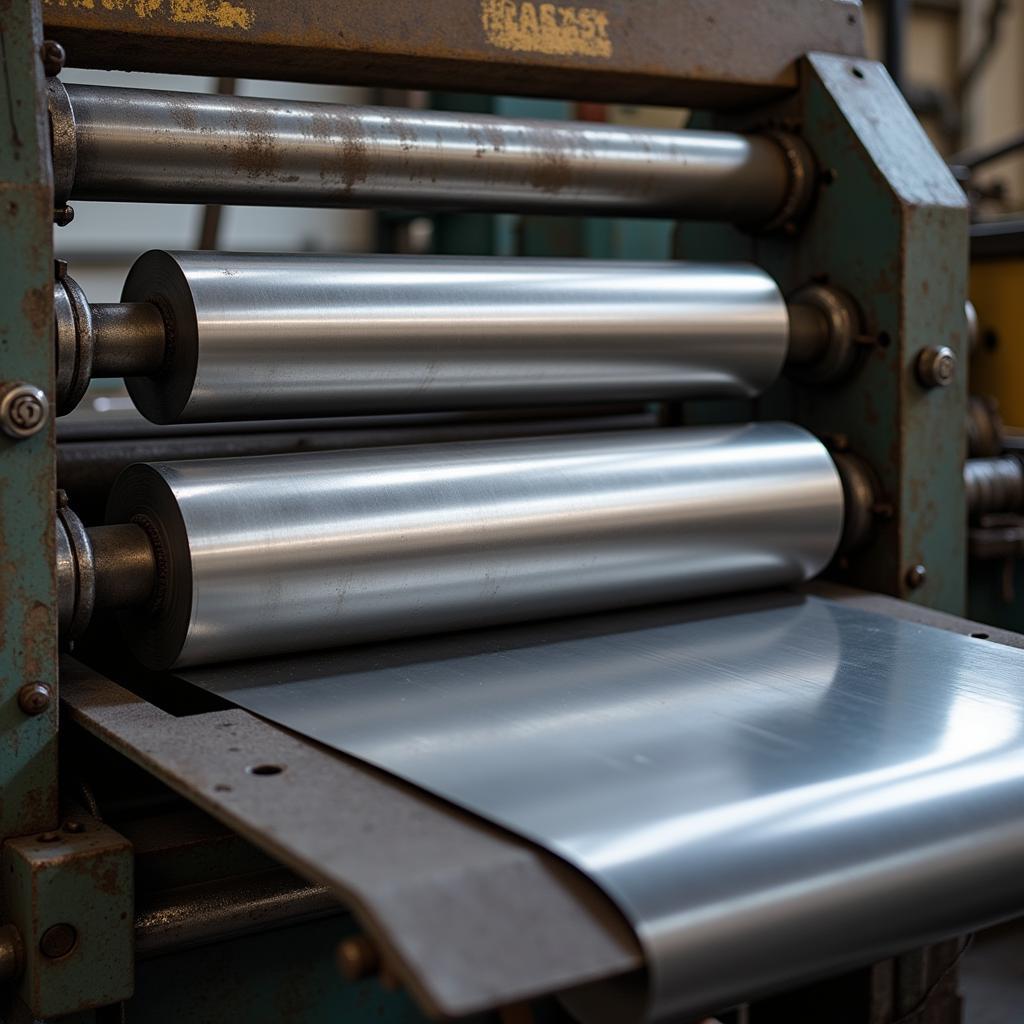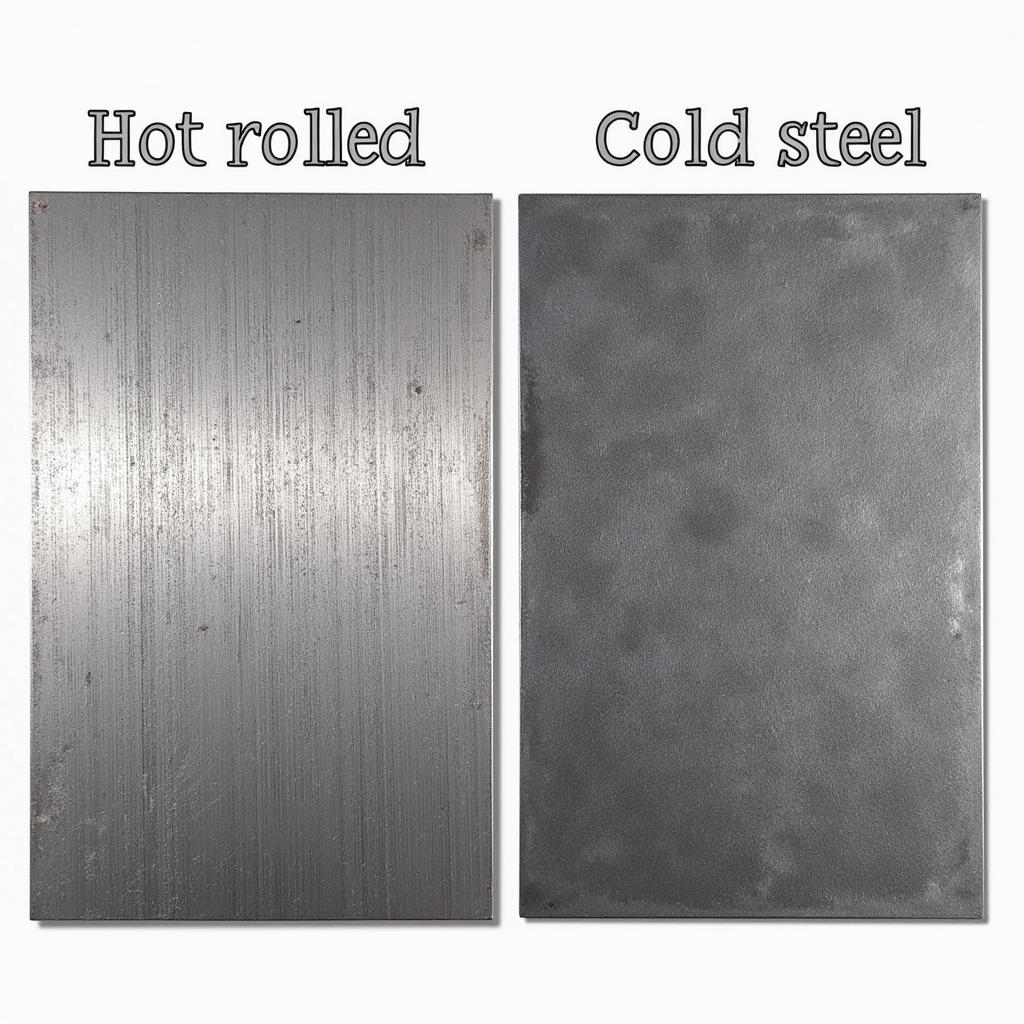Hot rolled and cold rolled steel are two common types of steel used in a variety of applications. Understanding the key differences between these two steel types is essential for selecting the right material for your specific project. This article will explore the manufacturing process, properties, common uses, and cost considerations of hot rolled vs. cold rolled steel, empowering you to make an informed decision.
Understanding Hot Rolled Steel
Hot rolled steel is produced at extremely high temperatures, typically above its recrystallization temperature. This allows the steel to be easily shaped and formed. The process begins with heating large billets or slabs of steel in a furnace. Once the steel reaches the desired temperature, it is passed through a series of rollers that reduce its thickness and shape it into the desired form, such as sheets, plates, bars, or rods.
- Advantages of Hot Rolled Steel:
- Lower cost due to a simpler manufacturing process.
- Easier to work with during fabrication due to its malleability at high temperatures.
- Available in larger sizes and thicker gauges.
- Disadvantages of Hot Rolled Steel:
- Less precise dimensions due to cooling and contraction.
- Rougher surface finish with potential scaling.
- Lower tensile strength compared to cold rolled steel.
 Hot Rolled Steel Production Process
Hot Rolled Steel Production Process
Exploring Cold Rolled Steel
Cold rolled steel undergoes further processing after hot rolling. It is cooled to room temperature and then rolled again at lower temperatures. This additional rolling improves the steel’s surface finish, dimensional accuracy, and strength. Cold rolling can also produce specific shapes, such as coils, sheets, and strips.
- Advantages of Cold Rolled Steel:
- Smoother and more aesthetically pleasing surface finish.
- Higher tensile strength and yield strength.
- Tighter tolerances and improved dimensional accuracy.
- Disadvantages of Cold Rolled Steel:
- Higher cost due to the additional processing steps.
- More difficult to work with during fabrication due to its increased hardness.
- Limited availability in larger sizes and thicker gauges.
 Cold Rolled Steel Production Process
Cold Rolled Steel Production Process
Hot Rolled vs. Cold Rolled Steel: A Direct Comparison
Choosing between hot rolled and cold rolled steel depends on the specific requirements of your project. Here’s a table summarizing the key differences:
| Feature | Hot Rolled Steel | Cold Rolled Steel |
|---|---|---|
| Manufacturing | High temperature rolling | Room temperature rolling |
| Surface Finish | Rough, scaled | Smooth, polished |
| Dimensions | Less precise | More precise |
| Strength | Lower tensile and yield strength | Higher tensile and yield strength |
| Cost | Lower | Higher |
| Applications | Construction, I-beams | Automotive parts, appliances |
Which Type of Steel is Right for You?
“Choosing the right steel depends heavily on the intended application. For structural applications where strength is paramount, cold rolled steel is often preferred. However, for projects where cost is a major factor and surface finish is less critical, hot rolled steel is a viable option,” says John Smith, a leading materials engineer at SteelCo.
 Comparison of Hot and Cold Rolled Steel
Comparison of Hot and Cold Rolled Steel
Conclusion
Understanding the differences between hot rolled and cold rolled steel is crucial for making informed decisions in various projects. While hot rolled steel offers cost-effectiveness and workability, cold rolled steel provides superior strength, dimensional accuracy, and surface finish. By carefully considering these factors and matching them to your project’s specific needs, you can select the optimal steel type for optimal results. Remember to factor in the project requirements and budget when choosing between hot rolled vs. cold rolled steel.
FAQ
- What is the main difference between hot and cold rolled steel?
- Is cold rolled steel stronger than hot rolled steel?
- Which type of steel is cheaper?
- What are the common applications of hot rolled steel?
- What are the common applications of cold rolled steel?
- Can hot rolled steel be further processed?
- How can I determine which type of steel is best for my project?
Gợi ý các câu hỏi khác, bài viết khác có trong web.
- Thép không gỉ là gì?
- Các loại thép xây dựng phổ biến.
Kêu gọi hành động: Khi cần hỗ trợ hãy liên hệ Số Điện Thoại: 0372999888, Email: aibongda@gmail.com Hoặc đến địa chỉ: 236 Cầu Giấy, Hà Nội. Chúng tôi có đội ngũ chăm sóc khách hàng 24/7.